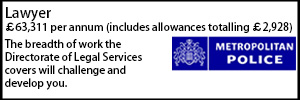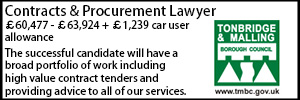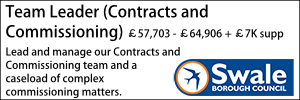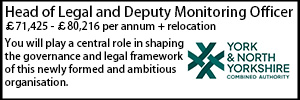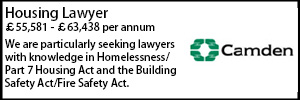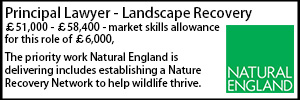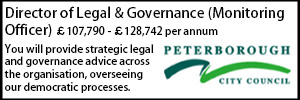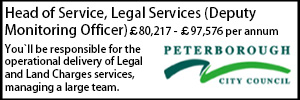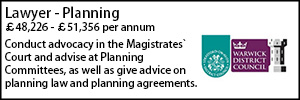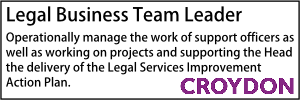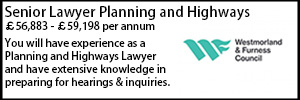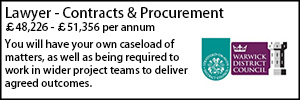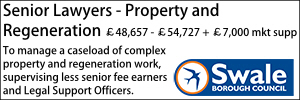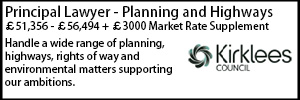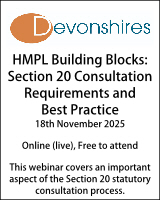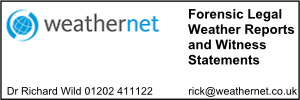London borough appeared “very confused” as to correct approach on designating illegal landfill as “contaminated land”, High Court finds
The High Court has told Havering Council to reconsider its decision not to identify an illegal landfill as 'contaminated land', after raising concerns that the London borough appeared "to have been very confused about the correct legal approach" to the site.
- Details
In Clear the Air in Havering, R (On the Application Of) v London Borough of Havering [2025] EWHC 1492 (Admin) (17 June 2025), Mrs Justice Lieven said that, in light of legal analysis and up-to-date data on emissions from the land, "it does not appear to me to be at all obvious that the decision would necessarily be the same".
The East London site, which is around 15 hectares in size and situated just 400m from a street of residential buildings, has been the subject of complaints for years and has a long planning history.
In 1999, planning permission was granted for development comprising "land raising to improve agricultural quality".
In 2000, further planning permission was granted to change the end use of the then-current permission from agriculture to woodland.
A condition of that permission required restoration to be carried out in accordance with submitted details, including as to the levels and contouring of the site.
However, in 2004, a stop notice and two enforcement notices were served in respect of the further deposition of waste and materials onto the site in breach of the 2000 planning permission.
The enforcement notices were upheld following an appeal but have never been complied with, and further unlawful tipping took place between 2011 and 2016, which resulted in the Environment Agency (EA) bringing prosecutions.
From at least 2018, there have been fires on the landfill, which have produced smoke that affects homes, a school and a golf course close to the site, according to the claimants, who are a local campaign group named Clear the Air in Havering.
In 2022 alone, the fire brigade were called 134 times, of which 70 were false alarms, meaning there were 64 fires within a 12-month period.
The council considered a series of reports from environmental consultants in its decision-making process before choosing not to declare the land as contaminated land within the meaning of Part 2A of the Environmental Protection Act 1990 in July 2024.
A 2023 report from one consultant found unsafe levels of arsenic, lead, benzo(b)fluoranthene, benzo(a)pyrene, and dibenzo(ah)anthracene in soil samples taken from the site.
It also warned that the risk of smoke from fires on the site "represents a health and safety concern associated with the smoke itself and any potential for particulates to be present/migrating as opposed to a contaminated land issue".
In later email correspondence between a council officer and the consultancy, the officer said: "I've been asked to look at the 'significant risk of significant harm' factor for declaring Launders Lane as Contaminated Land under Part 2A, and to request your view on it.
"Having read the report again, I'm of the opinion that it doesn't meet the threshold, primarily due to the lack of source-pathway-receptor, unless people are trespassing on the site.
"Therefore the 'significant risk' part of the definition is not met.
"The question over "significant harm" is still to be addressed, as there are some values higher than the guideline values, and I would be grateful if you could advise if this meets the 'significant harm' threshold."
In response, the consultant described fires on the site as the "key risk driver in terms of determining significance from our perspective".
Responding to the consultant, the officer said the council was "minded not to declare the site as Contaminated Land (under Part 2A) as the site is not open land to the public, nor is it easily accessible (unlike a park which is the guidelines you've assessed the site under)".
The email added: "Therefore, the possibility of people coming into physical contact with the soil is low. Whilst the recommendations within the report indicate that securing the site, capping and venting will further reduce the risk from future fires and prevent unauthorised access, there is currently no evidence to suggest that the fires mobilise the contaminants to neighbouring properties (although this has the caveat that in the current monitoring period there have been no fires of significance since last summer, so the air quality monitoring has not picked up anything untoward).
The council later revoked its abatement notice and has taken no further legal action in respect of the site.
In their ensuing claim, Clear Air for Havering advanced the following five grounds of challenge at the High Court:
1. The Defendant's approach to the question of whether the "reasonable likely future uses of the land that would not require a new or amended grant of planning permission" would involve the public accessing the site (per Guidance section 3.5) was unlawful (in condoning breaches of planning control and unlawfully taking into account temporary uses of the land which are not within the bounds of current planning permission).
2. The Defendant unlawfully failed to consider whether there were health effects which may be considered to constitute significant harm under paragraph 4.6 of the Guidance (e.g., respiratory tract effects), and instead limited its assessment to health effects that are always to be considered as causing significant harm (per paragraph 4.5 of the Guidance).
3. The Defendant's conclusion as to the risk of significant harm to human health:
a) Was based on a misdirection that the off-site pollution impacts of on-site fires were not a potential "contaminant linkage" for the purposes of paragraph 3.8 of the Guidance; and
b) Had no sufficient evidential basis and was anyway not logically based on the evidence before the Defendant (contrary to paragraph 3.4 of the Guidance).
4. The Defendant unlawfully failed to assess risks to non-human receptors, contrary to Table 2 of the Guidance.
5. Rather than seeking out the required evidence as mandated by paragraph 3.4 of the Guidance, the Defendant designated the site as not contaminated and thus unlawfully:
a) Failed to adopt a staged approach to risk assessment (Guidance Section 3.12), and/or
b) Failed to apply a precautionary approach (Guidance Sections 1.6, 4.25(a), 4.46(b)).
Ground one was dismissed by the judge as "plainly and obviously wrong".
Grounds two and four were also rejected, but grounds three and five were made out.
In handing down her decision, Lieven J said: "The local authority (LA) and the interested person (IP) both rely on s.31(2A) of the Senior Courts Act 1981 on the ground that it is highly likely that the decision would be the same if it was re-made. I have had regard to the Court of Appeal decision in R (Bradbury) v Brecon Beacons National Park [2025] EWCA Civ 489 and the need to focus on the impact of the error on the decision-making process."
She said she did not consider this is an appropriate case to apply s.31(2A), adding: "Although there has been further monitoring which [the council's barrister] submits does not show any significant risk to human health from fires, I am concerned that the LA appear to have been very confused about the correct legal approach to this site through the decision-making process.
"The error under Ground Three(a) is one of approach, and the misunderstanding about what monitoring had been undertaken in what circumstances does not give the Court confidence in the clarity of the LA's consideration."
She continued: "This is combined with the position of the IP [the site owner] which in its appeal against the Abatement Notice was that the Site was 'contaminated', but without any clarity as to what that meant and what they were conceding.
"In my view it is important that the LA reconsider the decision in the light of the proper legal analysis and all the up to date data that has been collected. It does not appear to me to be at all obvious that the decision would necessarily be the same."
"It would however not be appropriate for me to determine that the land is contaminated and make any declaration to that effect."
A spokesperson for Havering Council said: “We are now reviewing the detail in the ruling. One thing that is clear is it has asked us to reconsider our decision on whether Arnolds Field (Launders Lane) is 'contaminated land' or not.
“However, last year, we had already said that we would make a new decision on the Part 2A Contaminated Land determination when any new information was available and work is already well underway to progress this.
“We will also take any learnings from this ruling and apply those to that decision.”
Adam Carey
Senior Lawyer - Contracts & Commercial
Contracts & Procurement Lawyer
Lawyer - Property
Trust Solicitor (Employment & Contract Law)
Locums
Poll







